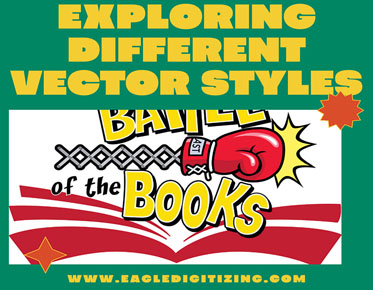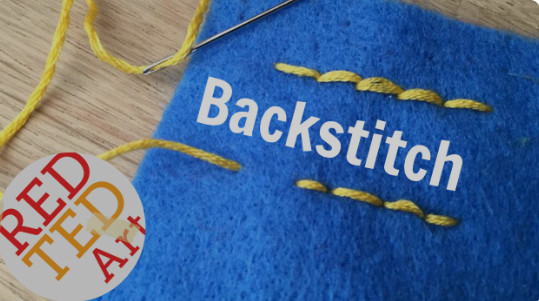Exploring Different Vector Styles and Themes for Every Project
In the vast landscape of design, vector styles stand out as pivotal tools for conveying messages, emotions, and aesthetics across a variety of projects. Whether it's a logo, an illustration, or a website layout, the choice of vector style can significantly impact the overall impression and effectiveness of the design. Understanding the nuances of different vector styles is crucial for designers looking to elevate their work and create impactful visual experiences. If this post spurred your interest and you want to find out more about Embroidery Digitizing, please feel free to contact us.
Classic vector styles are like the timeless pieces of a wardrobe—they never go out of fashion. Characterized by their clean lines, geometric shapes, and minimalist approach, classic styles exude a sense of elegance and sophistication. The emphasis on simplicity and clarity makes these designs versatile and suitable for a wide range of applications. From corporate logos to editorial illustrations, classic vector styles have a universal appeal that transcends trends.
Within the realm of classic vector styles, there's a subcategory that pays homage to the aesthetics of bygone eras. Retro and vintage vector styles evoke nostalgia and evoke a sense of charm that resonates with audiences of all ages. These designs often feature muted color palettes, distressed textures, and playful typography reminiscent of mid-century advertising and graphic design. Incorporating retro elements into modern projects adds a touch of personality and whimsy, creating a sense of warmth and familiarity.
In contrast to the timelessness of classic styles, modern vector designs embrace innovation and experimentation. Abstract shapes, vibrant colors, and dynamic compositions define the essence of modern vector styles, reflecting the fast-paced nature of contemporary culture. These designs are bold, expressive, and unapologetically dynamic, capturing the attention of viewers and leaving a lasting impression.
One of the hallmarks of modern vector styles is the use of gradients to add depth and dimension to illustrations. From subtle transitions to bold color combinations, gradients create visual interest and evoke a sense of movement that brings designs to life. Additionally, the rise of 3D and isometric illustrations has revolutionized the way designers approach vector art, allowing for more immersive and interactive experiences. By incorporating depth and perspective, 3D vector designs blur the line between reality and imagination, inviting viewers to explore and engage with the visuals in new ways.
Nature has long served as a boundless source of inspiration for artists and designers alike, and vector art is no exception. Natural vector styles celebrate the beauty of the natural world, from the intricate patterns of leaves and flowers to the sweeping landscapes of mountains and forests. These designs are characterized by their organic shapes, earthy color palettes, and textural details that evoke a sense of serenity and harmony with the environment.
Botanical illustrations are a popular theme within natural vector styles, with delicate flowers, lush foliage, and intricate botanical motifs taking center stage. These designs are perfect for projects related to gardening, eco-friendly products, or sustainable living, where they evoke a sense of connection to the natural world and promote a message of environmental stewardship. Additionally, environmental themes such as wildlife conservation and climate change are often represented through natural vector styles, highlighting the importance of protecting our planet and preserving its biodiversity.
Culture is a rich tapestry woven from the traditions, customs, and beliefs of diverse communities around the world. Cultural vector styles celebrate this diversity by incorporating elements of ethnic heritage, folk art, and global traditions into design projects. Whether it's the intricate patterns of African textiles, the vibrant colors of South American festivals, or the delicate motifs of Asian ceramics, cultural vector styles offer a window into the rich tapestry of human experience.
Ethnic patterns and motifs are a common theme within cultural vector styles, drawing inspiration from traditional textiles, ceramics, and decorative arts from around the world. These designs celebrate the beauty and complexity of different cultures while fostering a sense of inclusivity and appreciation for diversity. Additionally, folk art influences such as naive painting, embroidery, and paper-cutting techniques add a touch of authenticity and charm to cultural vector styles, reflecting the ingenuity and creativity of ordinary people.
Just as the seasons change, so too do the visual aesthetics that accompany them. Seasonal vector styles capture the essence of each season, from the fresh blooms of spring to the frosty landscapes of winter. These designs are characterized by their use of seasonal elements such as flowers, foliage, weather patterns, and holiday symbols, which evoke the mood and atmosphere of each time of year.
In spring, pastel colors, delicate blossoms, and playful motifs herald the arrival of new life and growth. These designs are light, airy, and full of optimism, reflecting the sense of renewal and rejuvenation that comes with the changing of the seasons. As the days grow longer and the temperatures rise, summer brings with it a burst of energy and vibrancy. Bold colors, tropical motifs, and beach-inspired imagery evoke a sense of fun and relaxation, capturing the carefree spirit of the season.
Autumnal vector styles are characterized by their rich color palettes, cozy textures, and nostalgic motifs that celebrate the harvest season. From falling leaves to pumpkin patches, these designs evoke a sense of warmth and comfort, inviting viewers to embrace the beauty of change and transition. Finally, winter vector styles capture the magic and wonder of the holiday season, with snowflakes, evergreen trees, and festive decorations creating a sense of coziness and joy. Whether it's a greeting card, a social media graphic, or a website banner, seasonal vector styles add a touch of seasonal cheer to any project.
Different industries have different visual aesthetics that resonate with their target audiences. Tech-focused designs, for example, often feature clean lines, minimalist layouts, and futuristic elements that reflect the innovative nature of the industry. Fashion and beauty aesthetics, on the other hand, are characterized by their elegance, sophistication, and attention to detail. From sleek typography to glamorous photography, these designs evoke a sense of luxury and aspiration that appeals to fashion-forward consumers.
Food and beverage themes often incorporate mouthwatering imagery, playful illustrations, and bold typography to stimulate the senses and evoke cravings. Whether it's a restaurant menu, a food packaging design, or a social media post, these designs are designed to whet the appetite and entice customers to indulge. Similarly, healthcare and wellness imagery emphasizes empathy, compassion, and trust, with soothing colors, comforting visuals, and relatable messaging that resonates with patients and caregivers alike.
While there are countless pre-made vector assets available online, sometimes a project calls for something truly unique and personalized. Custom vector styles allow designers to create illustrations that are tailored to the specific needs and preferences of their clients. Whether it's incorporating brand elements, capturing the essence of a company's values, or telling a story that resonates with a particular audience, custom vector styles offer endless possibilities for creativity and innovation.
Creating vector illustrations requires the right tools and software to bring your vision to life. Adobe Illustrator is the industry standard for vector design, offering a wide range of tools and features for creating everything from simple icons to complex illustrations. Affinity Designer is a more affordable alternative that offers many of the same features as Illustrator, making it a popular choice for designers on a budget. CorelDRAW is another option that provides powerful vector editing tools, along with additional features for layout and typography.
For those looking for free and open-source options, software such as Inkscape and Vector provide robust vector editing capabilities without the hefty price tag. Whether you're a seasoned professional or a beginner just starting out, there's a vector design tool out there to suit your needs and budget.
With so many vector styles to choose from, it can be overwhelming to know where to start. When selecting a vector style for a project, it's essential to consider the goals, audience, and brand identity. Think about the message you want to convey and the emotions you want to evoke in your audience. Are you aiming for a sleek and modern aesthetic, or do you want something more whimsical and playful? Does the design need to appeal to a specific demographic, or does it need to communicate a universal message?
Experimenting with different styles and exploring creative possibilities is key to finding the right vector style for your project. Don't be afraid to think outside the box and push the boundaries of what's possible. By combining elements from different styles or putting your own unique spin on a classic theme, you can create designs that stand out and make a lasting impression on your audience.
Sometimes, the most impactful designs are those that blend elements from multiple vector styles. By combining classic and modern elements, or incorporating natural and cultural themes, designers can create visually dynamic and engaging compositions that capture the imagination. Experimenting with different combinations of colors, shapes, and textures allows for endless possibilities for creativity and innovation.
In conclusion, exploring different vector
styles and themes opens up a world of creative possibilities for designers.
Whether you're creating a logo, an illustration, or a website layout, the right
vector style can elevate your project and make it stand out from the crowd. By
embracing versatility and innovation, designers can create impactful visual
experiences that resonate with audiences and leave a lasting impression. As
design trends continue to evolve, the dynamic nature of vector styles ensures
that there's always something new to discover and explore in the world of
design.



